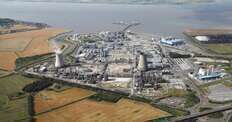- Hull site cuts emissions by 75% using low-carbon hydrogen.
- Reclassification may delay ETS allowances until 2028.
- £23 million penalty impacts already loss-making site.
- Acetic Acid production faces competition from higher-carbon imports.

Emission Reduction Achievement
INEOS Acetyls has achieved a significant milestone at its Hull site by reducing emissions by 75% through a pioneering switch from natural gas to low-carbon hydrogen. This reduction is equivalent to removing 160,000 cars from UK roads and positions the site to become the world’s first Net Zero producer of Acetic Acid, a vital component in various industries including food production and pharmaceuticals.
Regulatory Challenges
Despite this achievement, the Environment Agency is considering reclassifying the Hull site as a “new installation” due to its switch to a cleaner fuel source. This reclassification would delay the site’s UK Emissions Trading Scheme (ETS) allowances until 2028, resulting in a £23 million financial burden over the next three years. The site is already operating at a loss and faces competition from cheaper, higher-carbon imports, particularly from countries like China.
Industry Impact
The potential reclassification and resulting financial penalty highlight a regulatory challenge that could discourage industrial investment in the UK. The decision serves as a critical test of the UK’s commitment to supporting clean industrial initiatives. Failure to address this issue may push industries offshore, undermining the UK’s position as a leader in decarbonisation efforts.
Call for Action
INEOS is advocating for a straightforward, cost-neutral solution: allowing the Hull site to receive its 2026 and 2027 ETS free allocations on the standard timeline, similar to other eligible sites in the UK. This approach would not require additional credits but would ensure timely delivery of what is already due, supporting the site’s financial viability and the broader goal of industrial decarbonisation.

